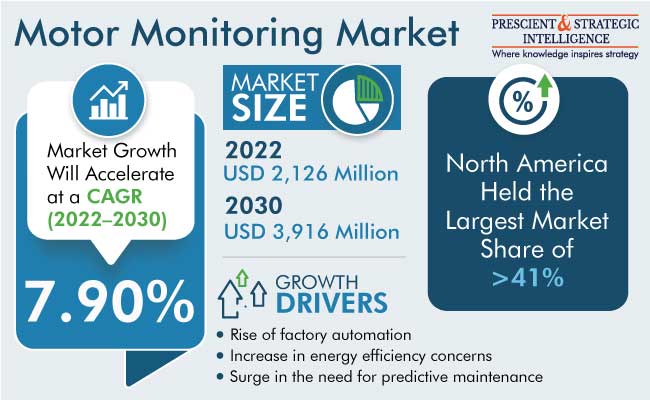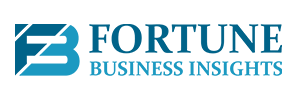Silicone Market to Observe Highest Growth of USD 38.6 billion with an Excellent CAGR of 7.3% by 2032
The Silicone Market size was valued at USD 19.2 Billion in 2022 and is anticipated to reach USD 38.6 Billion by 2032 with a CAGR of 7.3%.
Read More:
https://www.globenewswire.com/news-release/2023/10/06/2755866/0/en/Silicone-Market-Size-To-Reach-A-CAGR-of-7-3-By-2032.html
The silicone market has experienced significant growth and diversification in recent years, propelled by its versatile properties and wide-ranging applications across industries. Silicone, a synthetic polymer composed of silicon, oxygen, carbon, and hydrogen, offers exceptional heat resistance, flexibility, and durability, making it indispensable in sectors such as automotive, construction, electronics, healthcare, and personal care products.
In the automotive industry, silicones are used in gaskets, seals, and hoses, contributing to engine efficiency and longevity. In construction, silicone-based sealants and adhesives provide weatherproofing and structural integrity. In electronics, silicone encapsulants protect sensitive components from moisture and shock. Moreover, silicone elastomers find extensive use in medical devices and implants due to their biocompatibility and sterilizability.
Request Sample Report:
https://datahorizzonresearch.com/request-sample-pdf/silicone-market-2145
Several key factors are driving the growth of the silicone market:
· Increasing Demand Across End-Use Industries: The versatility of silicone makes it highly sought-after across a wide range of industries, including automotive, construction, electronics, healthcare, personal care, and energy.
· Advancements in Silicone Technology: Ongoing research and development efforts are leading to the introduction of new silicone formulations with enhanced properties and functionalities.
· Growing Awareness of Silicone Benefits: Increasing awareness among consumers and industries about the unique benefits of silicone, such as heat resistance, flexibility, biocompatibility, and weatherability, is fueling demand.
· Expanding Applications in Emerging Markets: Emerging economies, particularly in Asia Pacific and Latin America, are witnessing rapid industrialization, urbanization, and infrastructure development, driving demand for silicone-based products in construction, automotive, and electronics.
· Stringent Regulations and Sustainability Initiatives: Increasing regulatory requirements and environmental concerns are prompting industries to seek alternatives to traditional materials that are deemed hazardous or environmentally harmful.
Top Companies are:
The silicone market is home to several prominent players driving innovation, quality, and market expansion. Companies such as Elkay Chemicals Pvt. Ltd., Supreme Silicones, Shin-Etsu Chemical Co., Ltd., Elkem ASA, Silchem Inc., Amul Polymers, Wacker Chemie AG, The Dow Chemical Company, Specialty Silicone Products, Inc., Illinois Tool Works Inc., and Evonik Industries AG play significant roles in shaping the industry landscape.
Market Segmentations:
By Product Type (2023–2032)
· Fluids
· Gels
· Resin
· Elastomers
· Others
By Application (2023–2032)
· Electronics
· Construction
· Energy
· Healthcare
· Transportation
· Personal Care and Consumer goods
· Industrial Processes
· Others
For Further Information Regarding this Report: Ask For Discount:
https://datahorizzonresearch.com/ask-for-discount/silicone-market-2145
Regional Analysis
In 2022, North America emerged as a significant player in the silicone market, driven largely by heightened demand from the healthcare sector within the region. Silicone, renowned for its biocompatibility and suitability for medical applications, found widespread use across various medical domains. For instance, it served as a vital material in implants, respiratory devices, and components for medical equipment.
The enduring presence of implants within the human body necessitates materials that offer stability, durability, and biocompatibility — qualities inherently possessed by silicones. Moreover, in medical device components, silicone’s attributes like exceptional thermal stability, resistance to compression, and inert nature are indispensable, making it a preferred choice. With the healthcare industry in North America witnessing robust growth, there’s been a notable surge in demand for silicone and its derivatives, thus bolstering market expansion.
Silicone Market to Observe Highest Growth of USD 38.6 billion with an Excellent CAGR of 7.3% by 2032
The Silicone Market size was valued at USD 19.2 Billion in 2022 and is anticipated to reach USD 38.6 Billion by 2032 with a CAGR of 7.3%.
Read More: https://www.globenewswire.com/news-release/2023/10/06/2755866/0/en/Silicone-Market-Size-To-Reach-A-CAGR-of-7-3-By-2032.html
The silicone market has experienced significant growth and diversification in recent years, propelled by its versatile properties and wide-ranging applications across industries. Silicone, a synthetic polymer composed of silicon, oxygen, carbon, and hydrogen, offers exceptional heat resistance, flexibility, and durability, making it indispensable in sectors such as automotive, construction, electronics, healthcare, and personal care products.
In the automotive industry, silicones are used in gaskets, seals, and hoses, contributing to engine efficiency and longevity. In construction, silicone-based sealants and adhesives provide weatherproofing and structural integrity. In electronics, silicone encapsulants protect sensitive components from moisture and shock. Moreover, silicone elastomers find extensive use in medical devices and implants due to their biocompatibility and sterilizability.
Request Sample Report: https://datahorizzonresearch.com/request-sample-pdf/silicone-market-2145
Several key factors are driving the growth of the silicone market:
· Increasing Demand Across End-Use Industries: The versatility of silicone makes it highly sought-after across a wide range of industries, including automotive, construction, electronics, healthcare, personal care, and energy.
· Advancements in Silicone Technology: Ongoing research and development efforts are leading to the introduction of new silicone formulations with enhanced properties and functionalities.
· Growing Awareness of Silicone Benefits: Increasing awareness among consumers and industries about the unique benefits of silicone, such as heat resistance, flexibility, biocompatibility, and weatherability, is fueling demand.
· Expanding Applications in Emerging Markets: Emerging economies, particularly in Asia Pacific and Latin America, are witnessing rapid industrialization, urbanization, and infrastructure development, driving demand for silicone-based products in construction, automotive, and electronics.
· Stringent Regulations and Sustainability Initiatives: Increasing regulatory requirements and environmental concerns are prompting industries to seek alternatives to traditional materials that are deemed hazardous or environmentally harmful.
Top Companies are:
The silicone market is home to several prominent players driving innovation, quality, and market expansion. Companies such as Elkay Chemicals Pvt. Ltd., Supreme Silicones, Shin-Etsu Chemical Co., Ltd., Elkem ASA, Silchem Inc., Amul Polymers, Wacker Chemie AG, The Dow Chemical Company, Specialty Silicone Products, Inc., Illinois Tool Works Inc., and Evonik Industries AG play significant roles in shaping the industry landscape.
Market Segmentations:
By Product Type (2023–2032)
· Fluids
· Gels
· Resin
· Elastomers
· Others
By Application (2023–2032)
· Electronics
· Construction
· Energy
· Healthcare
· Transportation
· Personal Care and Consumer goods
· Industrial Processes
· Others
For Further Information Regarding this Report: Ask For Discount:
https://datahorizzonresearch.com/ask-for-discount/silicone-market-2145
Regional Analysis
In 2022, North America emerged as a significant player in the silicone market, driven largely by heightened demand from the healthcare sector within the region. Silicone, renowned for its biocompatibility and suitability for medical applications, found widespread use across various medical domains. For instance, it served as a vital material in implants, respiratory devices, and components for medical equipment.
The enduring presence of implants within the human body necessitates materials that offer stability, durability, and biocompatibility — qualities inherently possessed by silicones. Moreover, in medical device components, silicone’s attributes like exceptional thermal stability, resistance to compression, and inert nature are indispensable, making it a preferred choice. With the healthcare industry in North America witnessing robust growth, there’s been a notable surge in demand for silicone and its derivatives, thus bolstering market expansion.









